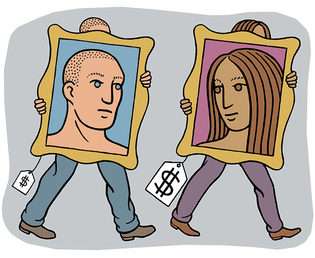 loading
loading
FindingsWomen artists and the “higher bar”? Gregory NemecView full imageAlthough over 50 percent of artists working today are women, female artists get fewer solo shows, are severely underrepresented in permanent museum collections (they fare better in galleries), and are much less frequently cited in books. Women achieve fewer leadership positions at arts institutions, and, across the arts professions, they earn 81 cents for each dollar earned by men. But a paper by Yale researchers found one area in which women artists outpace male peers: their work commands higher prices when sold at high-end auction houses. The paper, “Art and Gender: Market Bias or Selection Bias?” is by William N. Goetzmann ’78, ’86MPPM, ’90PhD, a professor of finance at the Yale School of Management; Laurie Cameron ’16MBA; and Milad Nozari of SOM. It has been published as a working paper in the Social Science Research Network. The team worked with a database of 4,434 graduates of the Yale School of Art between 1891 (when the school awarded its first fine arts degree) and 2014. Although degree recipients were initially overwhelmingly male, that began shifting in the 1970s. The researchers divided their data into two sets: before and after 1983, the year when gender parity was achieved among the school’s degree recipients. Controlling for variables that can influence pricing, the team found that, while female graduates from Yale’s art school are much less likely than males to see their work sold at auction, the works by women that do sell command higher average sale prices. One possible explanation, says Goetzmann: the “higher bar.” In other words, because auction houses typically set a higher quality standard for women than for men, works by women that make it into the secondary market are of greater value.
The comment period has expired.
|
|